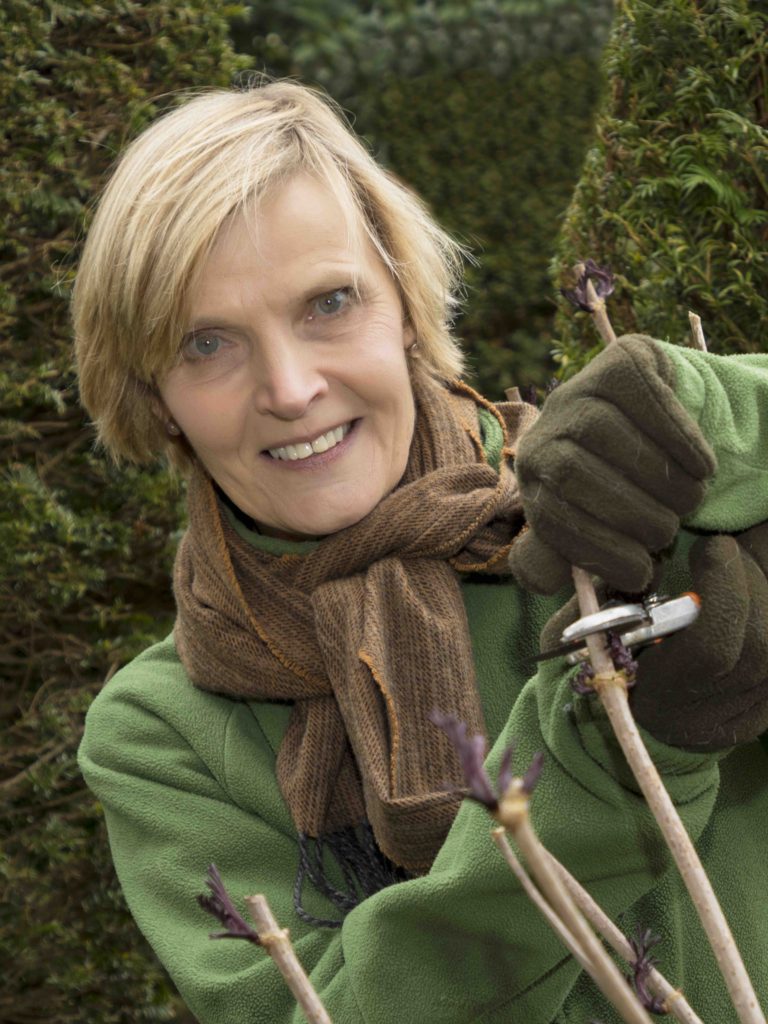
March is THE month to buy new primroses. The Primula genus is complex but luckily you’re starting with the most knowledgeable Growbag sister who can guide you through your choices.
Lets start with the different flower forms; primroses can be single, double, held aloft on a elongated stem as a polyanthus, or there can be whorls of flowers on a single stem as in the candelabra types.
Then there are the different species, some of which are native to the British Isles, and some which come from other countries but, given the right conditions, can be persuaded to grow here.
Much of the early breeding work consisted of selecting unusual individuals within native species, such as the lovely Primula vulgaris ‘Alba Plena’ a double white form of our native primrose, and its purple equivalent ‘Lilacina Plena’ or mutations that gave ruffs to the flowers known as Jack-in-the-green. Then came the auriculas, a mix of Alpine species from Northern Europe that the Victorians went a bit potty about, breeding an astonishing array of cultivars – the wonderful Abriachan Nursery by Loch Ness in the Scottish Highlands lists no less than seven pages of them.
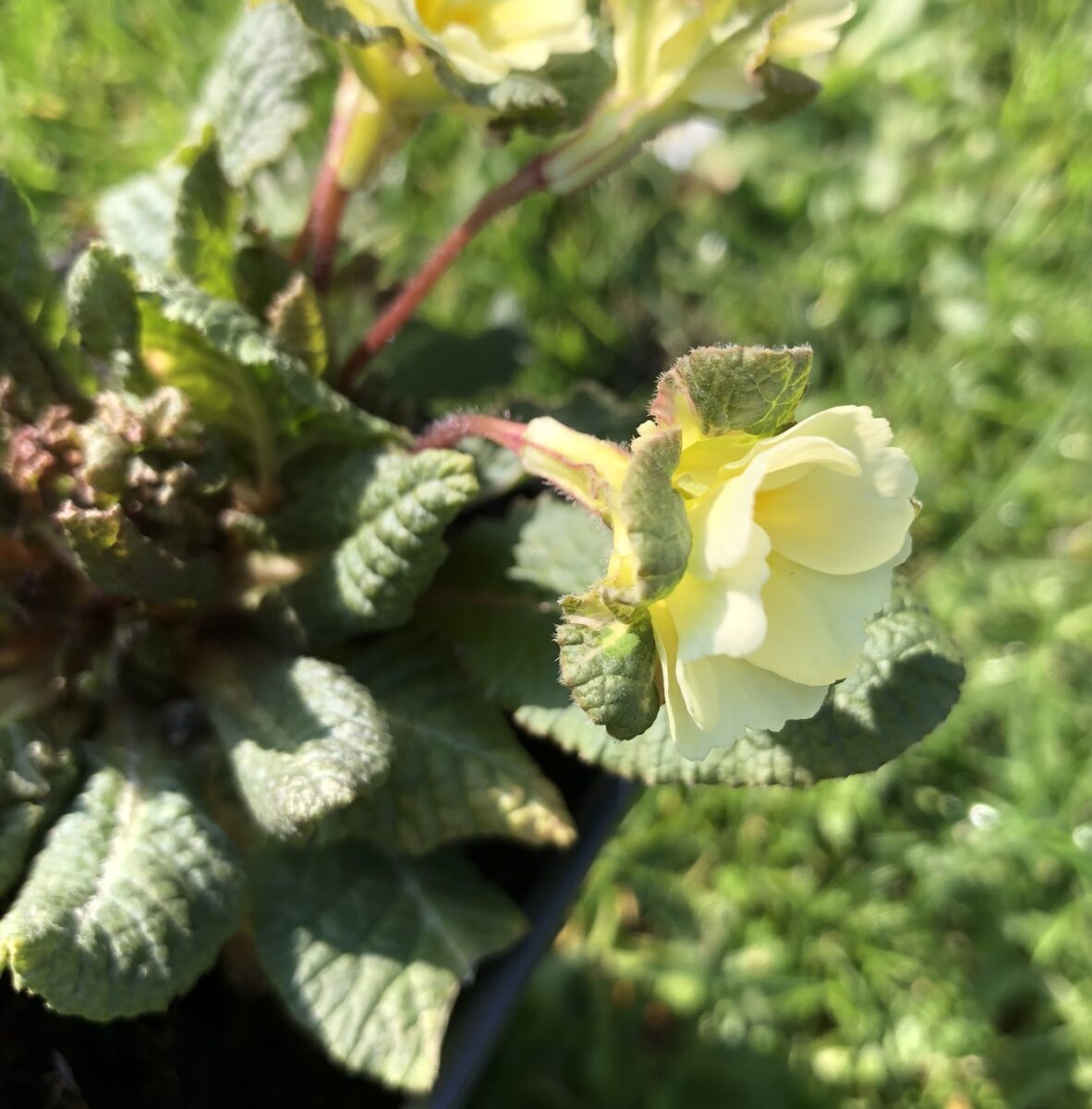
There has since been a long history of crossing between different Primula species to introduce desirable traits such as bronzy leaves or purer flower colour, and these heritage varieties have an almost mystical quality; the pale peachy pink flowers and purple tinted foliage of the peerless ‘Guinevere’, the delicate biscuit coloured polyanthus ‘Lady Greer’ or the low growing pink and white striped ‘Kinlough Beauty’. Barnhaven Nurseries have continued to carry the torch for new introductions.
Now I love a bit of history in the garden but have been thwarted by the propensity of these old fashioned beauties to dwindle away, and I have now switched to the Irish Kennedy group of primroses.
Joe Kennedy has done to primroses what David Austin did to roses, take all the good features of the old fashioned cultivars but bred in a robustness that makes them better garden plants. ’Drumbeg’, ’Drumcliff’ and ‘Innisfree’ are all now going strong in my spring bank. Great minds think alike and Louise’s plant of the moment this week is probably Joe’s best ever primrose, we’ve included a link at at the end.
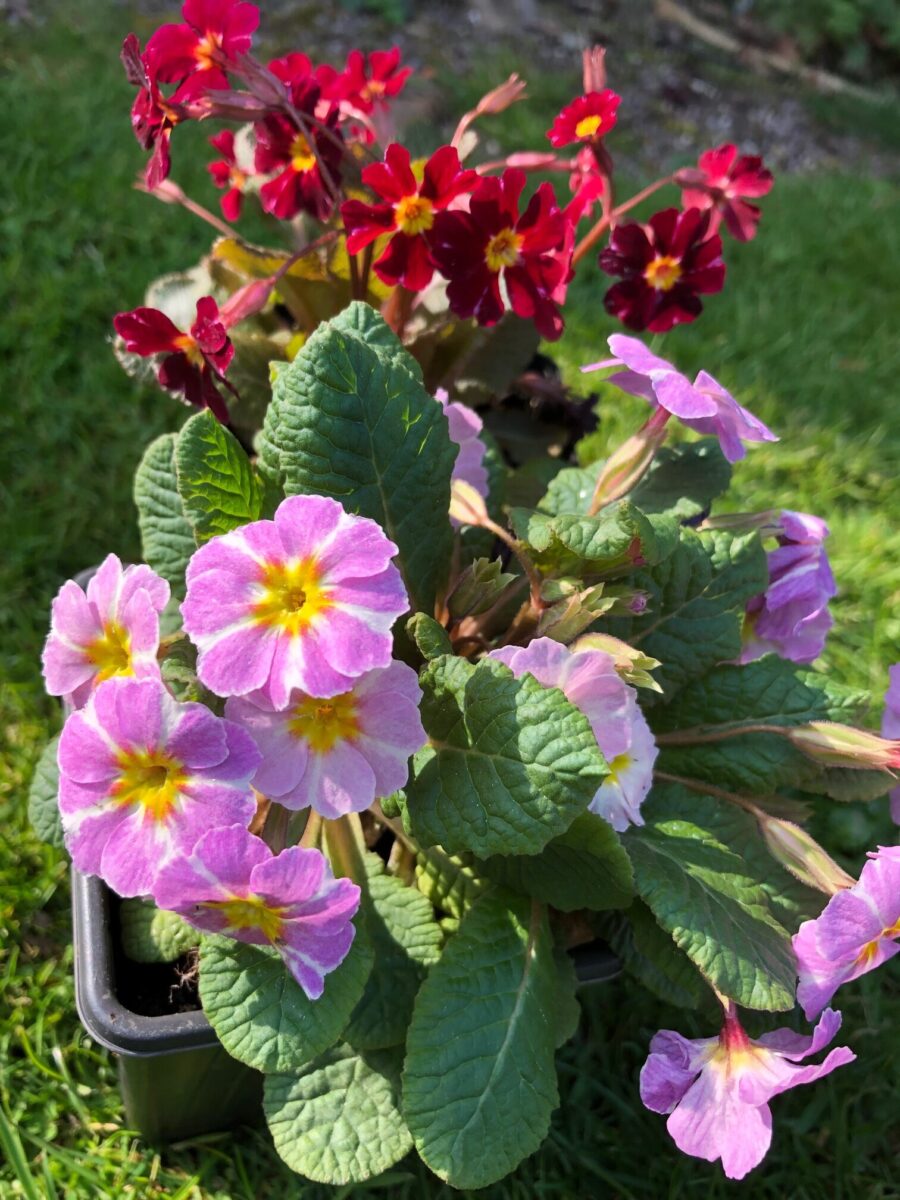
I stocked up on a few more from the excellent Yorkshire based Primrose Bank nursery at the Wisley Spring Plant Fair last weekend (see our feature picture).
Finally, if you want a talking point go for Primula ‘Francisca’; a bit of a mutant discovered growing on a roundabout in British Columbia, it is a statuesque thing with hybrid vigour and other-worldly lime and cream flowers. I love it, others hate it.
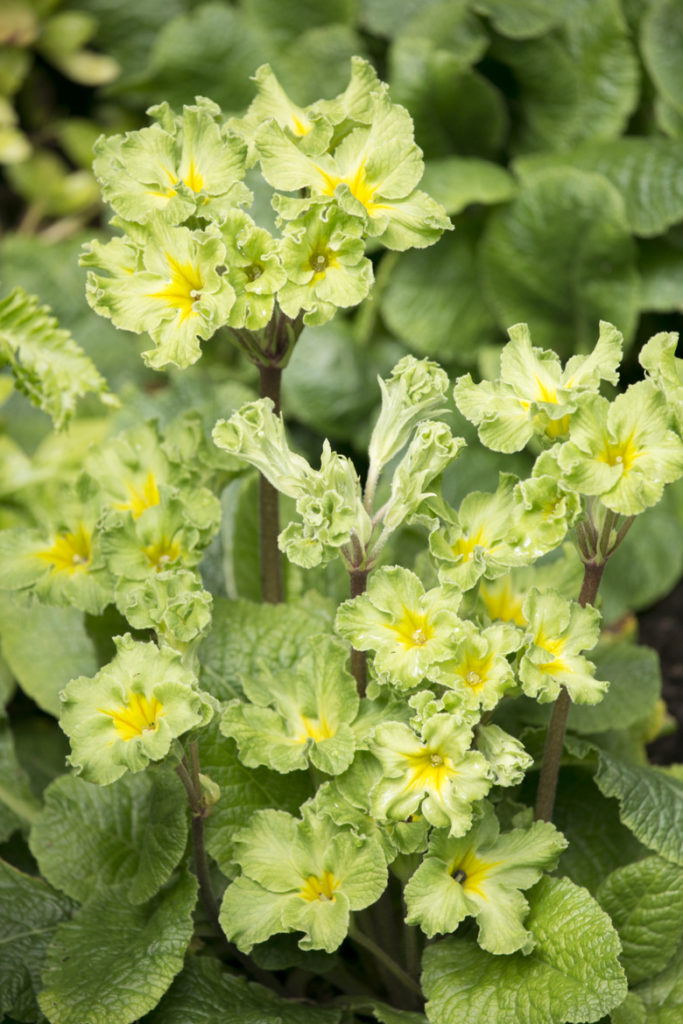
What you must NOT do is buy primroses from a supermarket, which stock horrible greenhouse cultivated specimens with overlarge blooms in primary colours which are programmed to peg out the moment they are planted out.

Laura is not alone in finding primroses and their relatives much trickier to keep going than their heritage would suggest. That celebrated cottage gardener Margery Fish (she of East Lambrook Manor fame), for instance, was indignant about how the totally neglected double primroses on the bank of a neighbouring farm always outshone her measly fussed-over specimens: ‘the crowns get hard and knotted, the roots are short and sparse, and they have none of the exuberant health of my unexpert neighbours’.
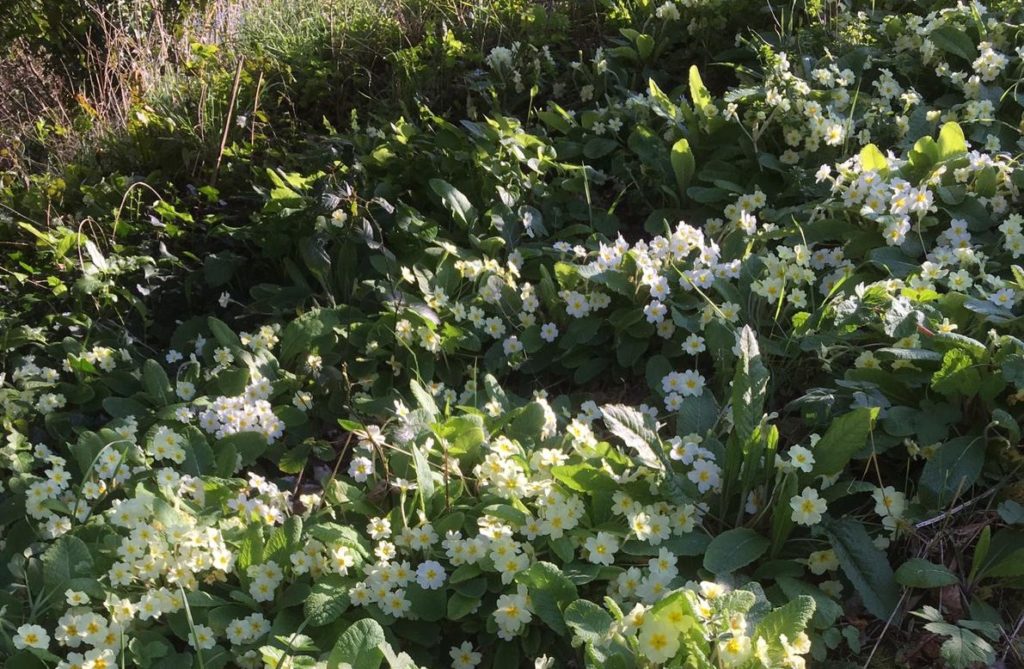
But why does Laura bother with all those fussy divas when we have huge drifts of the lovely scented common primroses with which the hedgerows of rural Normandy are a-glow at the moment.
By yearly division of the plants after flowering, my primrose bank in the garden is coming on nicely. Much rarer in the wild these days is P. veris the cowslip, and I am going to try and establish a colony of these next. Both common primroses and cowslips are bone-hardy, though a harsh frost can brown their petals.
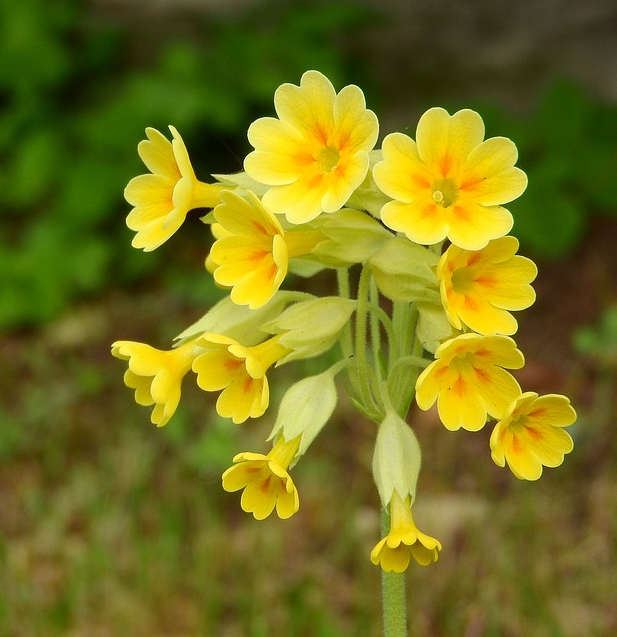
I do wonder if we have been mistaken in thinking that primroses must have moist, part-shaded soil. The best displays of primulas that I have seen, have ALWAYS been on sunny banks; dampish, I dare say, rather than parched, but certainly bright and free-draining. Like foxgloves, the colonies seem to ‘creep about’ as the seeds drop and take root a short way from the mother-plant.
The exception is candelabra primroses which are much taller, flower a bit later, and have the most enchanting colours – I would definitely grow them if I could offer the permanently boggy ditch conditions that they love. By the way, if you want to keep the colours separate, you’ll have to plant them in different parts of the garden – far too much interbreeding going on!

To be honest primulas here in Scotland are still plucking up courage to flower, it’s much too cold to consider anything that might lead to breeding.
Whilst Laura fusses around with nerdy ‘heritage’ varieties and Elaine coos over her romantic primrose banks, ‘oop north’ we must depend on sturdy early flowerers to give us hope like Primula denticulata, better known as ‘The Kirrie Dumpling’. Why? because of its dumpy shape (remind you of anyone? Laura?), and secondly because Kirriemuir in Angus was where Major George Sherriff retired to after his plant-hunting trips to Nepal – the origin of this cracking primula (no wonder it’s happy in Scotland).
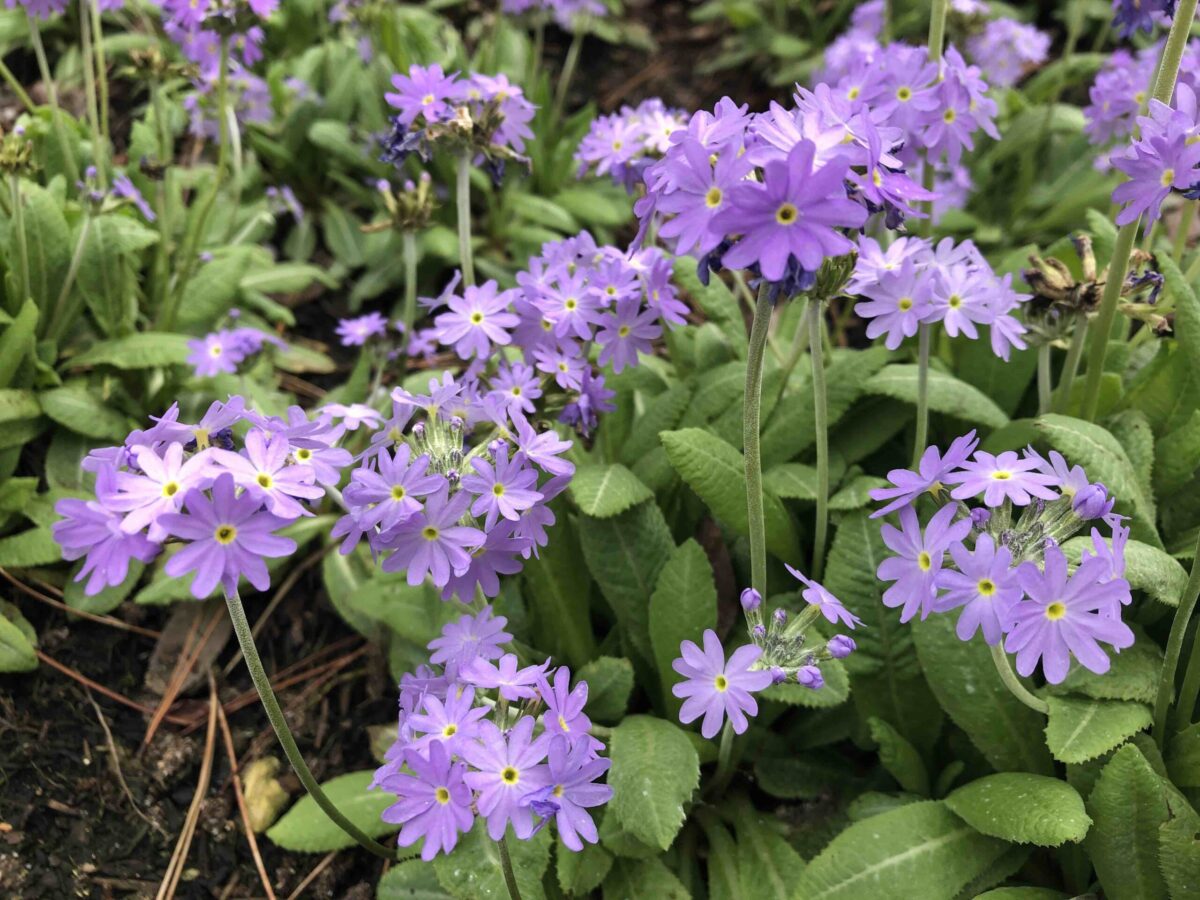
Primrose Day isn’t until 19 April (commemorating the death of primrose-freak Benjamin Disraeli – I’m full of facts this week, right?), but Easter is almost upon us. Play for safe and follow my example – ignore Laura, get down to that supermarket and stock up on those gob-smackingly bright polyanthus and give your tubs a right old blast of ‘SPRINGTIME’. Honestly, I swear it’s my sisters who put the prim in primula!
NB If you’re not already a subscriber and you’d like a bit more gardening chitchat from the3growbags, please type your email address here and we’ll send you a new post every Saturday morning.

3 replies on “So which primrose should you choose?”
Please! It’s Mothering Sunday NOT Mother’s Day – that’s a nasty commercialisation of the American holiday in June (or is it July?) to honour USA mothers. Ours was originally a church day but also when little servant girls were allowed a Sunday off to visit their mothers picking some primroses on the way to give them.
I agree about carpets of primroses – what more perfect sight of spring.
Hello Janie, Laura here, yes sorry, Caroline has always been a bit sketchy on historical accuracy… wouldn’t have happened if I had been given editorial control of the final draft..
Enjoy those wild primroses – as children we used to go out and pick great bunches of them then pack them in damp cotton wool in shoeboxes and post them to our Granny in Preston, probably illegal now!
Happy gardening, Laura
A lovely one is Primula blue riband – short in stature but covered in bright amethyst blue flowers with the usual yellow centres for at least a couple of months. Raised in Scotland apparently! Primula Lady Greer is also worth searching for, one of the few to have an RHS AGM. Small pale yellow flowers with delicate red veining flowering from Spring to early Summer.